Let’s start with the Rio Grande.
On Sunday around 5 p.m., a fire ignited in the bosque east of Socorro; as of Monday, the Otero Fire was 364 acres.
I haven’t been down there to see it yet, but my heart aches for the nesting birds (as well as porcupines, badgers, and other wildlife) who suffered.
Now for the river itself.
As of Monday, 26.8 miles of the Middle Rio Grande were dry in the San Acacia reach.
Last week, the Albuquerque Water Authority announced it was loaning surface water to the Middle Rio Grande Conservancy District, “thereby allowing MRGCD to maintain consistent river flows for farmers, irrigators and wildlife this spring.”
This is indeed a loan: according to the press release from the Water Authority: “Under the terms of the agreement, the water loan will be paid back from MRGCD supplies in Heron Reservoir no later than June 15. The agreement authorizes a loan of up to 100 percent of MRGCD’s June allocation.”
In addition, today and Wednesday, water managers will use water released from Abiquiu Reservoir to create a “jiggle.”
Jiggles are strategic water releases between diversions to support flows in short stretches of the river. In this case, the U.S. Bureau of Reclamation released 100 cubic feet per second of water for two days in support of a jiggle over the Isleta Diversion Dam.
Meanwhile, crews with the U.S. Fish and Wildlife Service are still capturing eggs from endangered silver minnows that spawn — and they are out capturing minnows1 they find in the drying riverbed.
News, commentary, poetry:
All Authors Working on Flagship U.S. Climate Report Are Dismissed (Brad Plumer and Rebecca Dzombak, The New York Times)
Feds 'mistakenly' kill collared and possibly pregnant Mexican gray wolf in Arizona (John Leos, Arizona Republic)
Note that on April 22, the U.S. Fish and Wildlife Service also killed AM2764, the breeding male of the Hail Canyon Pack in New Mexico. According to the memo authorizing wolf’s “removal,” the Hail Canyon Pack has preyed on cows grazing on public lands in the Gila National Forest. According to the memo, removal was “authorized only for AM2764 at this time.”
New Mexico Supreme Court asked to weigh in on Tesuque wastewater conflict (Danielle Prokop, Source NM)
Dallas sues national companies for damages from ‘forever chemicals’ in water (Maria Ramos Pacheco, The Dallas Morning News)
The Legal Battle for DOGE Transparency (Kyle Paoletta, Columbia Journalism Review)
Researchers are Using AI to Understand what Animals are Saying (David Gruber and César Rodríguez-Garavito, Time Magazine)
We Look at the World to See the Earth (Ed Roberson, Emergence Magazine)
This Is How to Win an Environmental Fight (Mariah Blake, The New York Times)
Why Navajos activists oppose a hydrogen pipeline that could be the world’s longest (Natasha Cortinovis, Arizona Republic)
Four Corners coal
As the Trump administration tries to stir up interest in coal again, I went looking through some photos from the Four Corners in the early 1970s — before environmental protections.
These photos, like the stunning Danny Lyons photo of the Rio Grande Valley, are all from the EPA’s Documerica Project.


Speaking of the EPA…
I’m sure many readers know about the oil spill that sent 285,000 gallons of crude oil into the San Juan River and toward Lake Powell in 1972. (Not to be confused with a 1965 spill into the San Juan or one in 2019 or the many others from the oil fields around Aneth, Utah.)
The 1972 spill came from a broken oil pipeline owned and operated by Texas-New Mexico Oil Company. As The New York Times reported at the time, a spokesman for the oil company claimed they “reported it promptly,” though Utah Gov. Calvin L. Rampton said the company kept it quiet for more than 12 hours.
The NYT pooh-poohed the ecological impacts of the oil spill on the San Juan River, writing that while there were reports of “oil-coated beavers” the “always muddy San Juan supports little marine life other than an occasional mud-catfish.” The bigger concern was for “millions of bass and trout,” which the federal and state government stocked in Lake Powell.
In the NYT, the Texas-New Mexico Oil Company touted its “excellent” safety record and the spokesman said the “company will pick up the tab.” But as the photos in the EPA’s Documerica Project show, the work was done (and largely paid for) by the federal government.

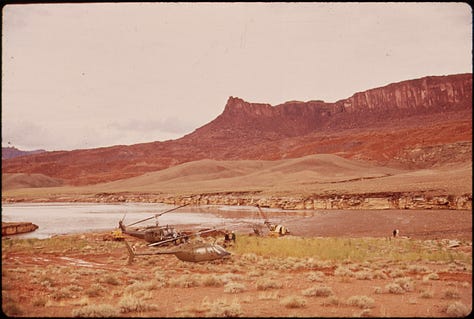

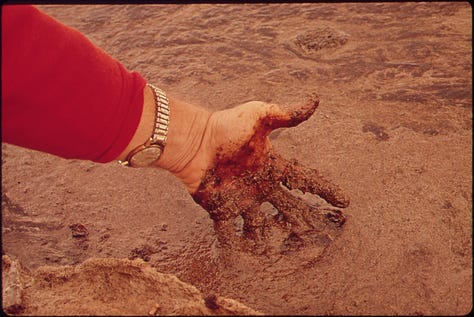
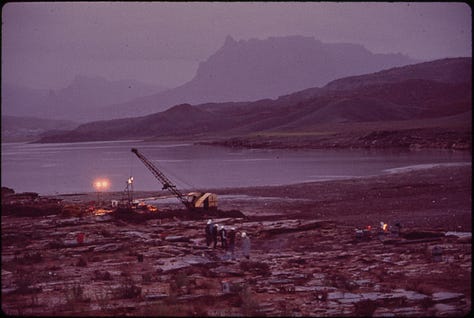

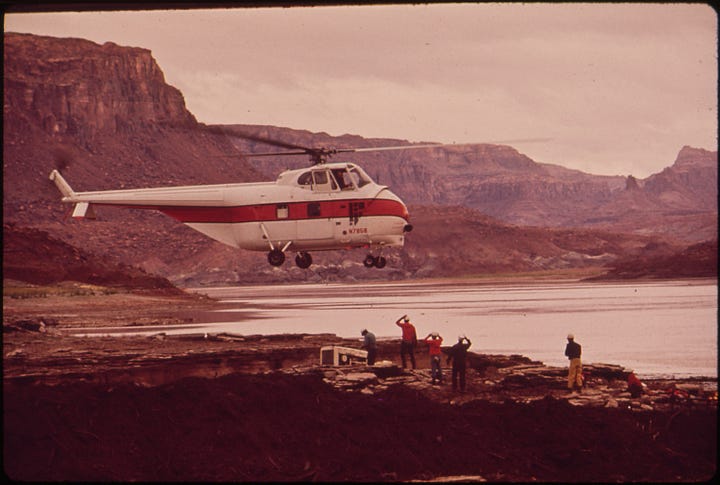
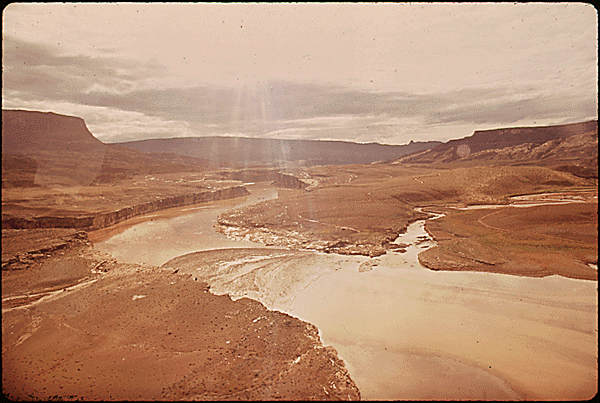
Beginning in the early 1970s, the U.S. Environmental Protection Agency hired more than 100 photographers to document pollution — just as the federal government was starting to implement and enforce environmental laws like the Clean Air and Water acts, the Endangered Species Act, the National Environmental Policy Act, and the Safe Drinking Water Act.
Those tens of thousands of photos are an invaluable record — and a reminder, of course, of all that was at stake more than 50 years ago.
The project also represents a time when government workers weren’t disparaged and purposefully traumatized, a time when Americans imagined a safer, less polluted, and more hopeful future for the Earth. The EPA documented pollution because people believed it would be a thing of the past.
Lately, I’ve been wanting to capture all that’s beautiful about our world because I’m afraid it’s fleeting. I’m afraid that we’re using up the Earth’s resources and leaving behind innumerable and overwhelming messes.
Revisiting the EPA’s old project reminded me how important it is to keep our imaginations expansive, and our hope intact.
“We cannot ask reason to take us across the gulfs of the absurd,” the novelist Ursula LeGuin wrote. “Only the imagination can get us out of the bind of the eternal present, inventing or hypothesizing or pretending or discovering a way that reason can then follow into the infinity of options….”
Note to subscribers:
I know the news stinks lately. I appreciate all of you, especially those who have joined up as paid subscribers. ❤️ And if you’re a new subscriber: hi! You can read old posts here if you’re interested.
Last week, USFWS salvaged 600 silvery minnows.





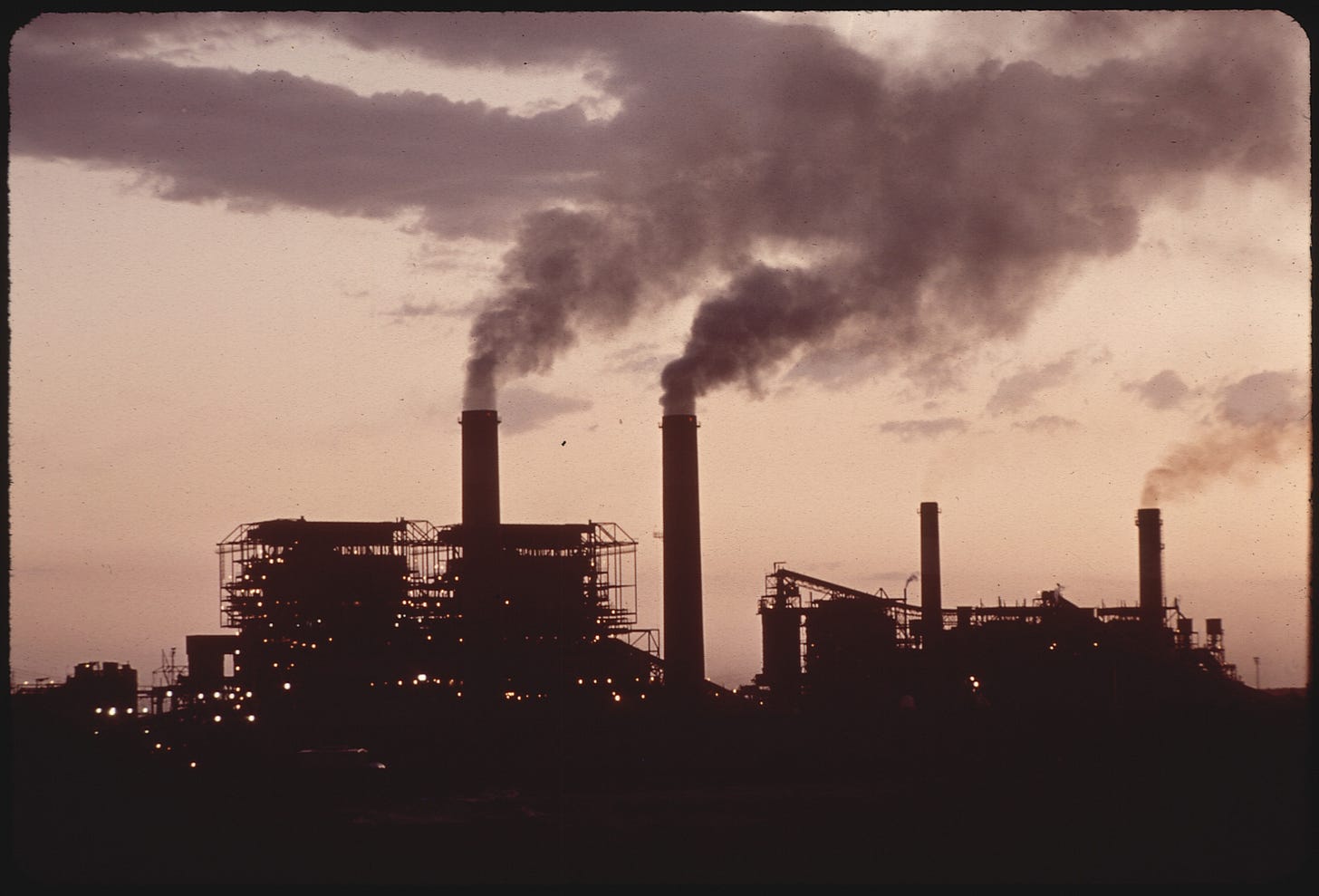
Amazing photos! Making records now is our gift to the future, as we gain perspective from viewing these documents of the past. Thanks, Laura.